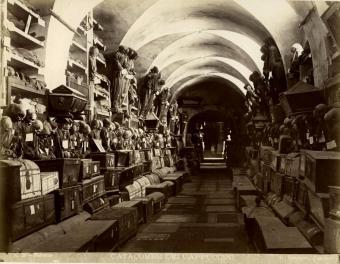Tests conducted on mummies in Sicily are revealing what Sicilians hundreds of years ago ate and how they died.
Italy is known for its collections of mummified bodies that date from the Middle Ages to the modern era. The mummies are concentrated in the south of the peninsula and Sicily in particular. The most important site recorded in Sicily is the Capuchin Catacombs in Palermo, where approximately 2,000 bodies are stored in wall niches or caskets in tunnels, sorted by age, sex and profession. There are other collections of mummies on the island, including those found at Savoca, Comiso, Caccamo, Gangi and Piraino.
The European Academy of Bozen/Bolzano, an independent research centre in the Dolomites, initiated the Sicilian Mummy Project five years ago. The project is investigating a wide variety of mummies in different crypts and chapels in Sicily. The mummies are being examined using anthropological and paleopathological techniques to identify the age and sex of the individuals, observe pathological conditions and evaluate the mummification processes. Detailed radiological investigations of selected mummies are being performed using radiographs and CT scans to avoid invasive procedures.
‘National Geographic’ magazine reports that the individuals mummified had a balanced diet of meat, fish, grains, vegetables and dairy. This is unsurprising given that those mummified usually came from the bourgeoisie and nobility, or were important clerics.
The magazine also reports that radiology has found that one mummy examined had had a form of cancer, and had been treated with milkwort and grape pulp. The use of medicinal plants against tumours and as purgatives indicates that people attempted to treat the cancer.









